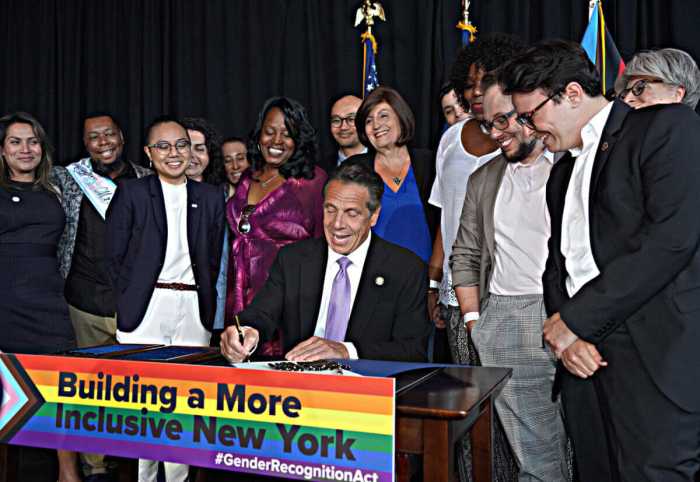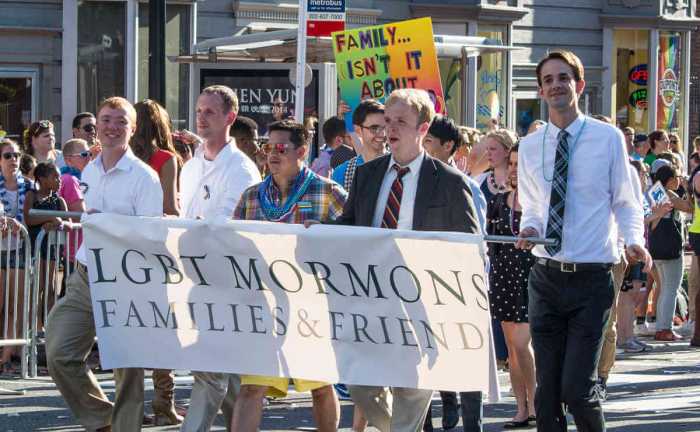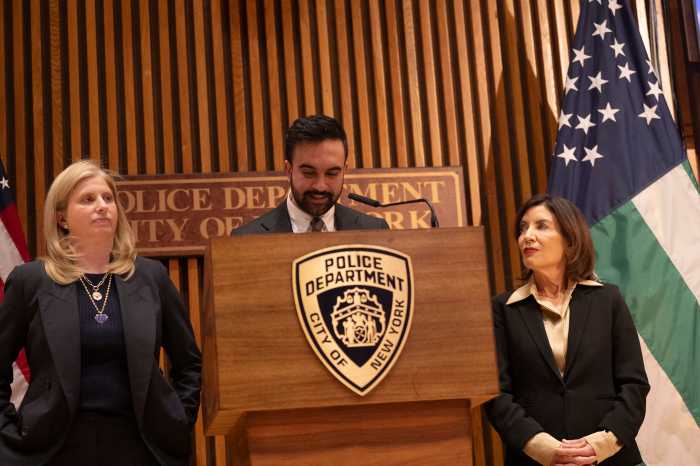On June 24, the Supreme Court ruled 5-4 in Dobbs v. Jackson Women’s Health Organization, that “the Constitution does not confer a right to abortion.” Justice Samuel Alito’s opinion for the majority of the Court, which did not change in any material way from the draft leaked earlier this year, embraces the “originalist” contention that the 14th Amendment, adopted in 1868, means what the generation that adopted it thought that it meant, as evidenced by the legal status of abortion at that time.
Under the Court’s reasoning, because the Constitution does not explicitly mention abortion, the question of whether it can be interpreted as protecting an individual’s right to terminate their pregnancy depends on the language of the 14th Amendment and how it would be understood in 1868. As of then, Alito contends, abortion was either criminalized or considered unlawful in most of the states, so a right to have an abortion could not be considered part of the “liberty” protected by the Due Process Clause of the 14th Amendment.
Alito’s approach follows the brand of originalism promoted by the late Justice Antonin Scalia, who responded to the progressive view that the Constitution needs to be reinterpreted for modern times — called the “Living Constitution” doctrine — by stating that the Constitution was “dead, dead, dead” in the sense that its meaning was fixed at the time it was adopted. Although elements of originalism of this brand have shown up from time to time in opinions by the justices, Alito’s opinion in Dobbs (and Just Clarence Thomas’s opinion a day before in Bruen, discussed below) mark its strongest acceptance in an opinion endorsed by a majority of the Supreme Court.
Responding to the government’s argument that the Court should apply a doctrine called “stare decisis” — Latin for standing with what has previously been decided — Alito’s opinion contends that it does not apply in this case because Roe v. Wade, the 1973 decision that first recognized this right, was “egregiously” wrong, created an unworkable approach to the issue, and did not generate any significant reliance interest that would be upset by overruling it.
In a dissenting joint opinion, Justices Sonia Sotomayor, Elena Kagan, and Justice Stephen Breyer forcefully repudiated all of these points at length, noting that this is the first time in its history that the Supreme Court has rescinded an individual right that it had previously recognized, and that access to abortion plays a central role in the lives of women and others seeking abortion.
Chief Justice Roberts wrote separately, not signing Alito’s opinion, arguing that the Mississippi law that bans abortions after 15 weeks of pregnancy could be upheld without overruling Roe v. Wade, by modifying that and other precedents to abandon the “viability” line (about 24 weeks) that had been adopted in that case to mark the point when the state’s interest in preserving life was deemed to overcome the woman right to terminate the pregnancy. In Roberts’ view, the Court should not overrule a precedent if it is not necessary to do so in order to reach the result the Court deems appropriate in a particular case. In this case, it was, in his view, possible to find that a 15-week line, based on what is now known about the development of a fetus in pregnancy, is a reasonable one.
The federal government, speaking through the Solicitor General, had argued to the Court that overruling Roe v. Wade would endanger such precedents as Lawrence v. Texas, which recognized the right of gay people to have sex, and Obergefell v. Hodges, which recognized the right of same-sex couples to marry. Both of those cases relied on the concept of “liberty” protected by the Due Process Clause of the 14th Amendment, as developed in a series of cases over the course of the 20th century, and both had prominently cited Roe v. Wade as a precedent for the right to individual autonomy in making important life decisions, such as whether to have a child. Other precedents that could be endangered by the Court’s approach in this case include Loving v. Virginia, which struck down a state law against interracial marriage, and Griswold v. Connecticut, which struck down a state law prohibiting distribution and use of contraceptives for preventing pregnancy. Both Loving and Griswold relied, at least in part, on an “unenumerated” fundamental right identified by the Court. Griswold’s Due Process component was a particularly important precedent for Lawrence v. Texas, and Loving was particularly important for Obergefell v. Hodges.
Justice Thomas signed Alito’s opinion, but in a separate concurring opinion, he called for the Court to “revisit” Lawrence v. Texas and Obergefell v. Hodges in an appropriate case. He has repeatedly described those decisions as being wrong.
As in his leaked draft, Alito asserted that the Court was only deciding about abortion, which he said was a unique subject, and that the Court’s opinion should not be construed to undermine decision on other subjects, such as Lawrence and Obergefell. He expanded on this point in the final version of the opinion, responding to the dissenters’ assertion that this new ruling endangers those precedents. In addition to reasserting the uniqueness of abortion because it involves “potential life,” he said that there might be other constitutional theories that could be used to support those other decisions. In both Lawrence and Obergefell, the Petitioners had also made Equal Protection arguments. In Lawrence, Justice Sandra Day O’Connor concurred in the result — striking down the Texas sodomy law — but on equal protection rather than due process grounds. In Loving v. Virginia, the Court principally relied on equal protection to hold the law against interracial marriages unconstitutional, only secondarily speaking in terms of due process, so that case would probably not be subject to serious challenge.
It is important to note that the Supreme Court does not spontaneously reopen cases long ago decided in order to overrule them. A new case has to come up to the Court. In the case of Lawrence or Obergefell, a new case would require a state to prosecute somebody for consensual private gay sex involving adults to generate a new case on that subject, and a state would have to defy the Obergefell ruling and refuse to grant licenses to or recognize same-sex marriages to generate a new case to get the issue before the Court.
Justice Kavanaugh wrote a concurring opinion, while also signing Alito’s opinion, emphasizing his view that the Court’s holding is that the Constitution is “neutral” on the subject of abortion, but the dissenters criticized this assertion as failing to recognize the impact that overruling will have here, in light of the trend in conservative states to enact new restrictions and bans on abortion in anticipation of the Court’s ruling. It is hardly “neutral” to withdraw a right that has been recognized for almost 50 years.
Alito’s originalism approach in this case contradicts a century of Supreme Court decision-making, the dissenters observed, and is directly inconsistent with a series of Supreme Court opinions starting with Roe v. Wade and extending through half a dozen or more decisions dealing with challenges to various state restrictions and regulations affecting abortion, all of which had accepted Roe and Planned Parenthood v. Casey (from 1993) as settled precedents.
Just a day earlier, Justice Thomas took a similar “originalism” approach in writing for a 6-3 majority in New York State Rifle & Pistol Association v. Bruen, a case challenging a New York law that required a person who sought a license to carry arms outside their home (with limited exceptions) to show that they had some individualized need to do so, a standard that could not be met by a general assertion of fearfulness from regularly being in a high crime neighborhood. Thomas wrote for the Court that because it had determined several years ago that the Second Amendment clearly protects an individual’s right to bear arms, a state must apply the same license requirements to everybody, regardless whether they just want to keep a handgun in their home for self defense or want to carry one about in public for the same reason. The Second Amendment is part of the Bill of Rights adopted in 1791. Thomas said that if it was a widely recognized right in 1791 for people to carry arms, then that is what the Second Amendment protects. And since the right is protected based on the 1791 meaning of the language, the state may not infringe that right for any individual without a substantial justification on the state’s part. Putting the burden on the individual to show that they need the gun is, in the Court’s view now, unconstitutional.
This will require New York and several other states to rethink their gun control laws, and will affect the ability of the federal government and states to undertake new initiatives to protect the public from the plague of guns.


































